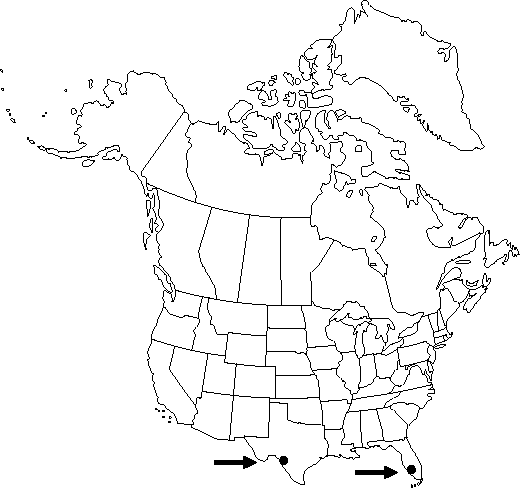Nymphaea ampla
Syst. Nat. 2: 54. 1821.
Rhizomes unbranched, erect, ovoid; stolons absent. Leaves: petiole glabrous. Leaf blade abaxially purple, often spotted, adaxially green, ovate to nearly orbiculate, 15-45 × 15-45 cm, margins dentate to spinose-dentate; venation radiate and prominent centrally, without weblike pattern, principal veins 13-29; surfaces glabrous. Flowers emersed, 7-18 cm diam., opening and closing diurnally, only sepals and outermost petals in distinct whorls of 4; sepals green, abaxially flecked with short dark streaks, faintly veined, lines of insertion on receptacle not prominent; petals 12-21, white; stamens 50-190, yellow, outer with connective appendage projecting 3-10 mm beyond anther; filaments widest at or below middle, mostly equal to or shorter than anthers; pistil 14-25-locular, appendages at margin of stigmatic disk short-triangular, to 3 mm. Seeds nearly globose to ellipsoid, 1.2-1.6 × 0.9-1.3 mm, 1.2-1.5 times as long as broad, with longitudinal rows of hairlike papillae 40-180 µm.
Phenology: Flowering all year.
Habitat: Ditches, canals, ponds, and freshwater tidal margins
Elevation: 0-350 m
Distribution

Fla., Tex., Mexico, West Indies, Central America, South America.
Discussion
Reports of Nymphaea ampla in southern Texas by H. S. Conard (1905) are confirmed by specimens although no recent collections have been seen.